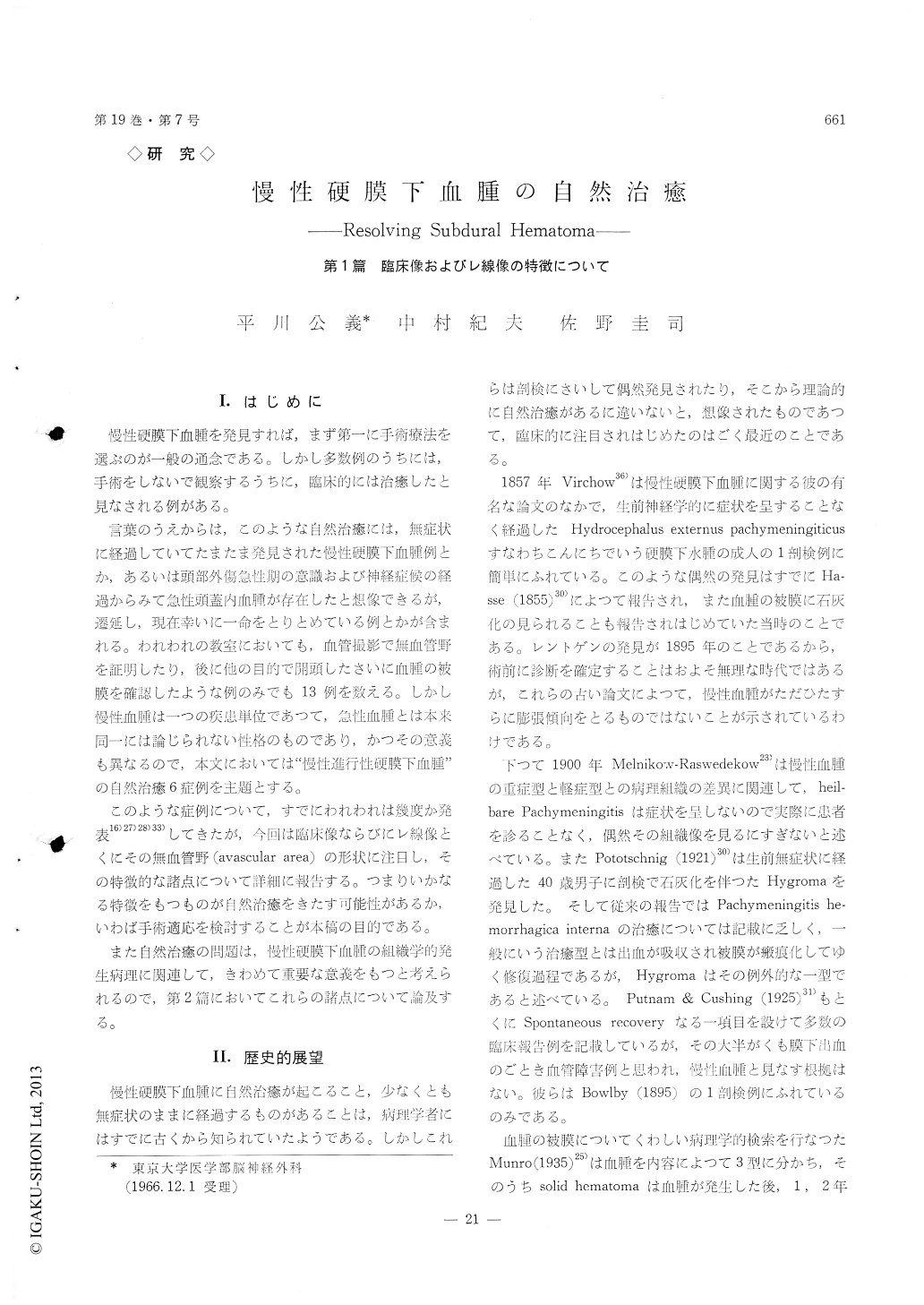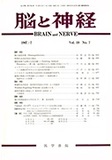Japanese
English
- 有料閲覧
- Abstract 文献概要
- 1ページ目 Look Inside
I.はじめに
慢性硬膜下血腫を発見すれば,まず第一に手術療法を選ぶのが一般の通念である。しかし多数例のうちには,手術をしないで観察するうちに,臨床的には治癒したと見なされる例がある。
言葉のうえからは,このような自然治癒には,無症状に経過していてたまたま発見された慢性硬膜下血腫例とか,あるいは頭部外傷急性期の意識および神経症候の経過からみて急性頭蓋内血腫が存在したと想像できるが,遷延し,現在幸いに一命をとりとめている例とかが含まれる。われわれの教室においても,血管撮影で無血管野を証明したり,後に他の目的で開頭したさいに血腫の被膜を確認したような例のみでも13例を数える。しかし慢性血腫は一つの疾患単位であつて,急性血腫とは本来同一には論じられない性格のものであり,かつその意義も異なるので,本文においては"慢性進行性硬膜書下血腫"の自然治癒6症例を主題とする。
(1) Spontaneous recovery from chronic subdural he-matoma without surgical intervention has observed in six cases in the Department of Neurological Sur-gery, University of Tokyo Hospital. Case reports of these six, which are about 4 per cent of our to-tal number of chronic subdural hematoma during past 15 years, have been described in detail. Maximal follow up periods is as long as 9 years. Some common clinical and roentgenological features are pointed out in the cases of spontaneous recovery as described below.
(2) Chronic subdural hematoma is devided into three types, rapid, moderate and slow, in view of clinical rapidity after the development of various symptoms. And from the clinical course after the onset of symp-toms, they are classified into three, acute exacerba-tion, gradually progressive and intermittent course of type. Cases of spontaneous recovery belong to the slow and intermittent course of type. They are not accompanied with prominent focal signs and symptoms of the cerebral hemisphere.
(3) On the antero-posterior view of carotid angiography in case of chronic subdural hematoma, variations of configuration of avascular area are noticed. They are devided in three types after the shape of lens, convexo-convex type, plano-convex type and con-vexo-concave type. The last type is peculiar to the spontaneous recovery.
(4) The course of regression or resolving can be de-tected roentgenographically by the transformation of avascular area, beginning with convexo-convex type, through plano-convex type, to the convexo-concave type and disappearance. This is the reverse relationship to that of Norman29) who has made comment in 1956 on the formation and expansion of the encapsulated hematomas.
(5) Chronic subdural hematoma should be treated sur-gically. In some of the exceptional cases, sponta-neous recovery ocurr. Its criteria is as follow, 1) the younger the better, although it ocurres in any age groups.
2) the manifestation of various symptoms is slow-, its clinical course is intermittent without focal signs of hemisphere and it does not show the tendancy of rapid progress.
3) convexo-concave type of avascular area on the carotid angiographs strongly suggests the sponta-neous recovery.

Copyright © 1967, Igaku-Shoin Ltd. All rights reserved.


